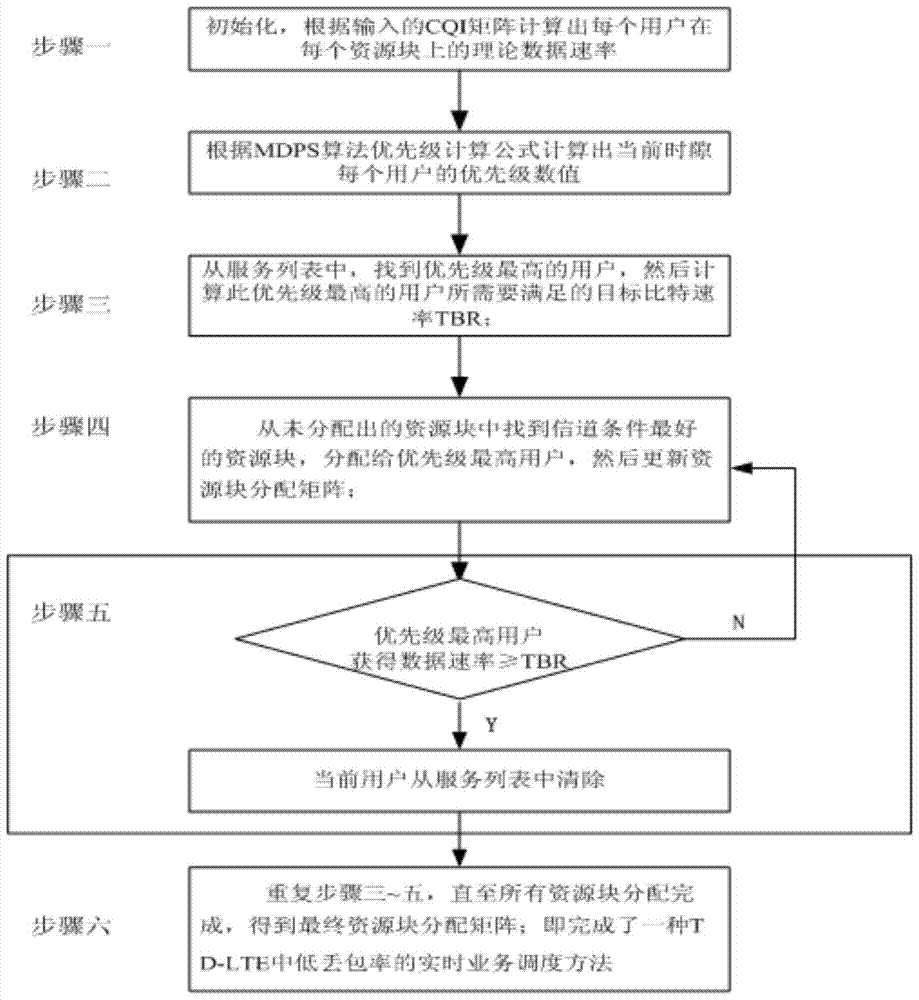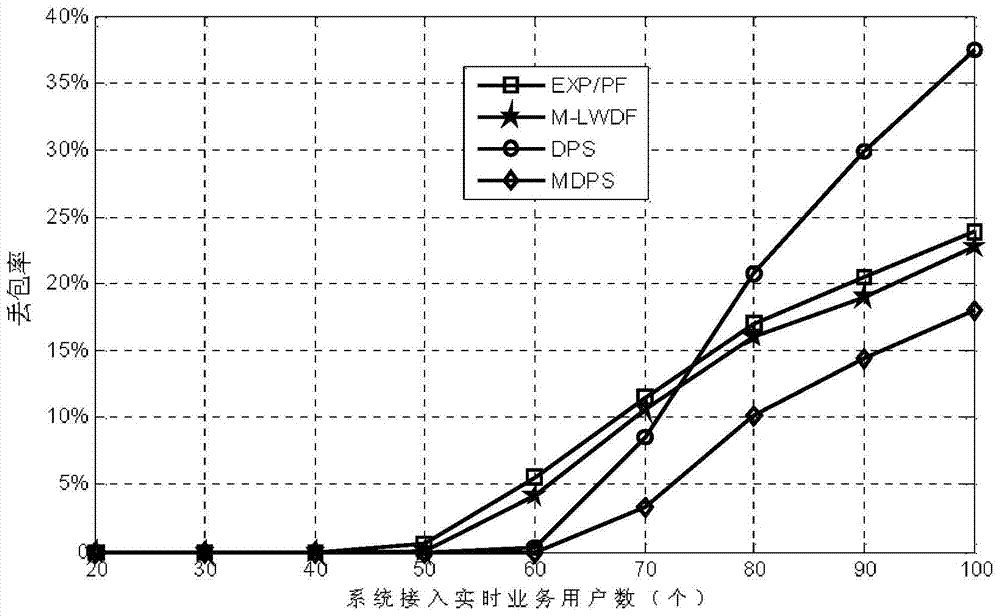A real-time service scheduling method with low packet loss rate in td-lte
A technology of real-time services and scheduling methods, applied in digital transmission systems, electrical components, error prevention, etc., can solve problems such as low system throughput and poor performance of DPS algorithm packet loss rate
- Summary
- Abstract
- Description
- Claims
- Application Information
AI Technical Summary
Problems solved by technology
Method used
Image
Examples
specific Embodiment approach 1
[0023] Specific embodiment one: a kind of TD-LTE middle and low packet loss rate real-time service scheduling method of the present embodiment, specifically prepare according to the following steps:
[0024] Step 1, initialization, calculate the theoretical data rate of each user on each resource block according to the input CQI matrix, and the average spectral efficiency of each user on the entire bandwidth;
[0025] Step 2, calculate the priority value of each user in the current time slot according to the MDPS algorithm priority calculation formula;
[0026] Step 3. From the service list, find the user with the highest priority, and then calculate the target bit rate TBR that the user with the highest priority needs to satisfy;
[0027] Step 4. Find the resource block with the best channel condition from the unallocated resource blocks, allocate it to the user with the highest priority, and then update the resource block allocation matrix;
[0028] Step 5. Determine whethe...
specific Embodiment approach 2
[0037] Specific embodiment 2: The difference between this embodiment and specific embodiment 1 is that in the step 1, the theoretical data rate of each user k on each resource block i is calculated The method is:
[0038]
[0039] In the formula, nsymbols is the number of OFDM symbols on a subframe, nsubcarriers is the number of subcarriers on a resource block, Q m It is the number of bits that a symbol can carry, which is determined by the modulation method. is the coding rate obtained by mapping the MCS and SINR mapping table specified in Table 1 TD-LTE according to the user SINR (Signal-to-Interference-Noise Ratio) value, and MCS (Modulation and Coding Scheme) is the modulation and coding strategy. Other steps and parameters are the same as those in Embodiment 1.
[0040] Table 1 MCS and SINR mapping table
[0041]
specific Embodiment approach 3
[0042] Specific embodiment three: the difference between this embodiment and specific embodiment one or two is: the calculation method of each user priority in the MDPS algorithm proposed in the said step two is as follows:
[0043]
[0044] In the formula, E(Г k ) is the average spectral efficiency of user k on all PRBs, τ k is the delay threshold of real-time service user k, W k (t) is the head-of-queue delay (HOL) of real-time service user k, a is a constant, and the value of a will affect the proportion of user channel status in user priority. If a is smaller, the channel state of the user can determine the scheduling order of the user more, which is helpful to improve the system throughput, and the fairness among users will be reduced. After multiple simulation verifications, from the perspective of balancing system throughput and user fairness, a=10 is selected here. Other steps and parameters are the same as those in Embodiment 1 or Embodiment 2.
PUM
 Login to View More
Login to View More Abstract
Description
Claims
Application Information
 Login to View More
Login to View More - Generate Ideas
- Intellectual Property
- Life Sciences
- Materials
- Tech Scout
- Unparalleled Data Quality
- Higher Quality Content
- 60% Fewer Hallucinations
Browse by: Latest US Patents, China's latest patents, Technical Efficacy Thesaurus, Application Domain, Technology Topic, Popular Technical Reports.
© 2025 PatSnap. All rights reserved.Legal|Privacy policy|Modern Slavery Act Transparency Statement|Sitemap|About US| Contact US: help@patsnap.com



